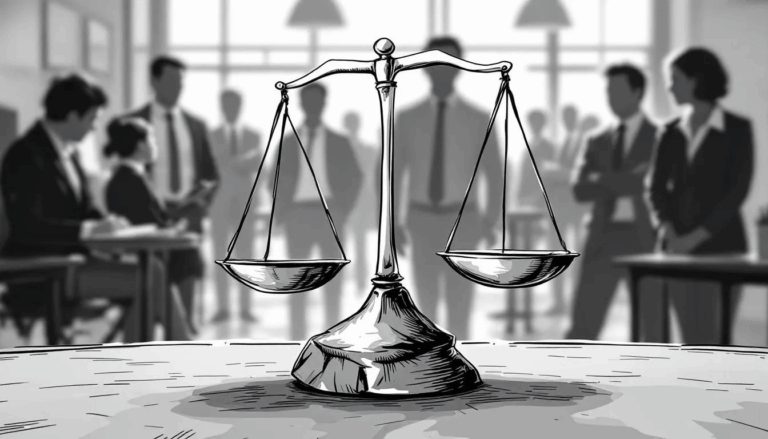Believing you’ve been wrongfully terminated in Texas for a bad reason can be daunting. This guide will help you understand what wrongful termination is, how to prove it, and the steps you should take next. From filing a complaint to potential compensation, each section is designed to inform you and protect your rights.
Key Takeaways
- In Texas, wrongful termination happens when an employee is fired for illegal reasons like discrimination or retaliation, despite the state’s at-will employment rule.
- To prove wrongful termination, gather solid evidence like employment records, emails, and witness statements to demonstrate that the firing had an illegal motive.
- If you suspect wrongful termination, act quickly by seeking legal advice, filing a complaint, and ensuring you meet the deadlines for pursuing a claim.
- Violations of company policy can lead to termination, but wrongful termination occurs when the termination is for illegal reasons.
Understanding Being Wrongfully Terminated in Texas

In Texas, employment at will is generally considered “at-will,” meaning an employer can terminate an employee for almost any reason or even no reason at all. However, there are important exceptions to this rule. If an employer terminates an employee for illegal reasons, such as discrimination or retaliation, it constitutes wrongful termination in an at will state. Wrongful termination can also occur if an employee is fired for attending jury duty.
Discrimination based on race, gender, age discrimination, national origin, religion, sexual orientation, and disability is prohibited under both federal and Texas laws. Furthermore, retaliation against employees for reporting illegal activities or asserting their legal rights can also lead to a wrongful termination claim. Constructive discharge, where working conditions become so intolerable that an employee is forced to resign or be fired, is another form of wrongful termination.
Employees must show that their employee’s termination resulted from illegal reasons, like discrimination or retaliation, including wrongful firing. This article explains that understanding both federal laws, such as Title VII of the Civil Rights Act, employment law, health administration, and Texas-specific laws is crucial for recognizing and asserting legal right, especially when an employer terminated an employee for unlawful reasons, including medical leave, to protect employees and employers under the employment act. Employment discrimination can be a significant factor in these cases. The Americans with Disabilities Act (ADA) protects employees from being terminated due to their disabilities.
Legal Grounds for a Wrongfully Terminated in Texas Claim
Understanding the legal grounds for a wrongful termination claim is crucial. Termination based on race, sex, age, and disability discrimination is illegal. Retaliation for reporting workplace discrimination also provides a strong basis for a claim. Additionally, economic damages can be sought as compensation for financial losses due to wrongful termination.
Proving a wrongful termination claim based on discrimination cases requires showing that you belong to a protected class and met your employer’s legitimate job performance expectations. Documenting discrimination or retaliation patterns through records and witness accounts is vital for a strong case. Proving discrimination often involves showing that similarly situated employees were treated more favorably.
Termination for illegal reasons can include overt discrimination or subtle retaliation, as many factors contribute to the situation. Detailed records of discriminatory or retaliatory behaviors help substantiate claims and demonstrate an illegal motive, as well as any unlawful behavior related to an actual reason for a violation of an illegal reason, including terminating actions.
Proving Your Wrongful Termination Case

Start by demonstrating how to prove wrongful termination by showing that your termination was due to an illegal motive, like discrimination or retaliation. If an employer fires an employee for reporting illegal activities, it can be considered wrongful termination. In retaliation claims, it’s critical to establish a causal link between your protected activities and the wrongful termination claims.
Collecting comprehensive employment records, like an employment contract, pay stubs, and performance reviews, is vital for substantiating a wrongful termination claim. Emails and written communications about performance issues or conflicts serve as critical evidence, creating a paper trail. If you believe you’ve been unjustly terminated, gather evidence like employment records and witness statements. Wrongful termination can result from various forms of discrimination, including race, gender, and disability.
Witness statements from colleagues or supervisors provide evidence that can strengthen your case. Maintaining a personal journal of workplace incidents and conversations supports your claim. Organizing evidence, like creating a chronological timeline of events, clarifies context and strengthens your wrongful termination case. For example, this approach can help illustrate the timeline of events clearly.
Steps to Take After Being Wrongfully Terminated

If you suspect that you are being wrongfully terminated in Texas, take immediate steps to protect your rights. Seek advice to determine the best course of action and consider filing a complaint with the Texas Workforce Commission. Filing a legal claim is a crucial step in seeking justice for wrongful termination.
Legal assistance from employment lawyers is invaluable. These specialists navigate internal grievance procedures and legal protections, help build a strong case for the worker, and represent you in law proceedings. Employees cannot be fired for reporting unsafe working conditions, as this is protected under occupational safety laws.
The Texas Workforce Commission Civil Rights Division (TWCCRD)
The Texas Workforce Commission Civil Rights Division (TWCCRD) has the authority to investigate charges of discrimination against employers who are covered by the law. It’s role in an investigation is to fairly and accurately assess the allegations in the charge and then make a finding. The law the TWCCRD covers protect an employee from employment discrimination when it involves:
- Unfair treatment because of your race, color, religion, sex, national origin, disability, age (age 40 or older), or genetic information.
- Harassment by managers, co-workers, or others in your workplace, because of your race, color, religion, sex, national origin, disability, age (age 40 or older), or genetic information.
- Denial of a reasonable workplace change that you need because of your religious beliefs or disability.
- Retaliation because you complained about job discrimination or assisted with a job discrimination proceeding, such as an investigation or lawsuit.
How Long Do I Have to File an EEOC or TWC Complaint?
While it is important to collect evidence and take your time to draft a solid complaint, there are time limits for filing a complaint with both the EEOC and TWC.
You only have 180 days to file a complaint with the TWC-CRD from the last date of discrimination, and you have 300 days to file a complaint with the EEOC (after the last date of discrimination). If you have a claim related to an accommodation for pregnancy, religion, or disability, you only have 180 days (TWC) or 300 days (EEOC) to file a complaint from the date of the first accommodation request.
What Happens When You File A Complaint? TWCCRD will notify you when it receives your complaint. TWCCRD will also: Notify the alleged violator of your complaint and permit that person to submit a response Investigate your complaint and determine whether there is reasonable cause to believe the law had been violated Conciliation: The TWCCRD will try to reach an agreement with the person your complaint is against (the Respondent).
A conciliation agreement must protect both you and the public interest. If an agreement is signed the TWCCRD will take no further action on your complaint unless the TWCCRD has reasonable cause to believe that the conciliation agreement has been breached. The TWCCRD may then recommend that the Texas Attorney General file suit.
What Happens After A Complaint Investigation? If, after investigating your complaint, the TWCCRD finds reasonable cause to believe that discrimination occurred, it will inform you. Additionally your complaint will be referred to the TWCCRD’s office of General Council for additional action(s). If, after investigating your complaint, the TWCCRD finds no reasonable cause to believe the law had been violated you will be notified in writing. Additionally, you will be informed of your right to file suit at your expense, in Federal or State District Court within two years of the alleged violation.
Filing a Wrongful Termination Lawsuit

Filing a wrongful termination lawsuit requires swift action due to tight deadlines. In Texas, you generally have 180 days from the termination date to file a claim. While employers can terminate employees for any lawful reason, doing so for an illegal act is grounds for a wrongful termination claim. Missing this deadline can result in losing your right to pursue legal action.
The statute of limitations for filing a wrongful termination claim can sometimes extend to 300 days, depending on circumstances. Refusing to perform an illegal act is a protected activity, and termination for such refusal can lead to a wrongful termination lawsuit. Early consultation with an employment lawyer helps ensure you meet deadlines and file your claim correctly.
Potential Damages and Compensation
In wrongful termination cases, employees may seek various types of damages and compensation, including lost wages, punitive damages, and job reinstatement. Lost wages compensate for income lost due to wrongful termination. An employee’s termination can lead to various forms of compensation, including economic damages.
Punitive damages deter wrongful behavior and punish the employer. If an employee is terminated for reporting sexual harassment, they may be entitled to punitive damages. In some cases, job reinstatement may be sought to restore the employee’s position.
Understanding the types of damages and compensation you may be entitled to is essential when pursuing a wrongful termination claim.
How Employment Lawyers Can Help

An experienced employment attorney can help you understand your rights and prepare your case regarding your employment relationship. They evaluate your wrongful termination claim to determine its merit based on existing laws and guide you through the complex legal landscape. An employer’s actions during the termination process can significantly impact the outcome of a wrongful termination case.
If wrongful termination is identified, employment lawyers represent clients in court to seek remedies. Their expertise and guidance can significantly impact the outcome of your case. Employment lawyers help protect workers’ rights and navigate the complexities of being wrongfully terminated in Texas claims.
Summary
Wrongful termination in Texas is a complex issue, but understanding your rights and the steps you can take is crucial. Being fired for an unlawful reason can lead to a wrongful termination claim. From recognizing illegal reasons for termination to gathering evidence and seeking legal assistance, every step is important in building a strong case.
If you believe you have been wrongfully terminated, don’t hesitate to take action. Understanding your rights can help you challenge a termination based on an unlawful reason. Consult with an employment lawyer, file your claim promptly, and pursue the compensation you deserve. Stand up for your rights and make sure your voice is heard. Click here to learn more about steps you can take to stand up for yourself.
Frequently Asked Questions and 5 Steps to Take
1) What is the statute of limitations for filing a wrongful termination claim in Texas?
You’ve got 300 days from your termination date to file a wrongful termination claim in Texas. Don’t wait too long to act on it!
2) What types of damages can be awarded in a wrongful terminated in Texas case?
In a wrongful termination case, you could get awarded lost wages, punitive damages, or even your job back. It’s all about making you whole again after the unfair dismissal.
3) What should I do immediately after being wrongfully terminated?
If you’ve been wrongfully terminated, your first step should be to seek legal advice to understand your rights. Also, consider filing a complaint with the Texas Workforce Commission to initiate your case.
4) How can I prove my wrongful termination case?
To prove your wrongful termination case, gather all your employment records, emails, witness statements, and keep a personal journal of incidents at work. This solid evidence will help strengthen your claim.
5) Can I still file a wrongful termination claim if the statute of limitations has passed?
Unfortunately, if the statute of limitations has passed, you’re generally out of luck in filing a wrongful termination claim. It’s crucial to act quickly and know those deadlines!



